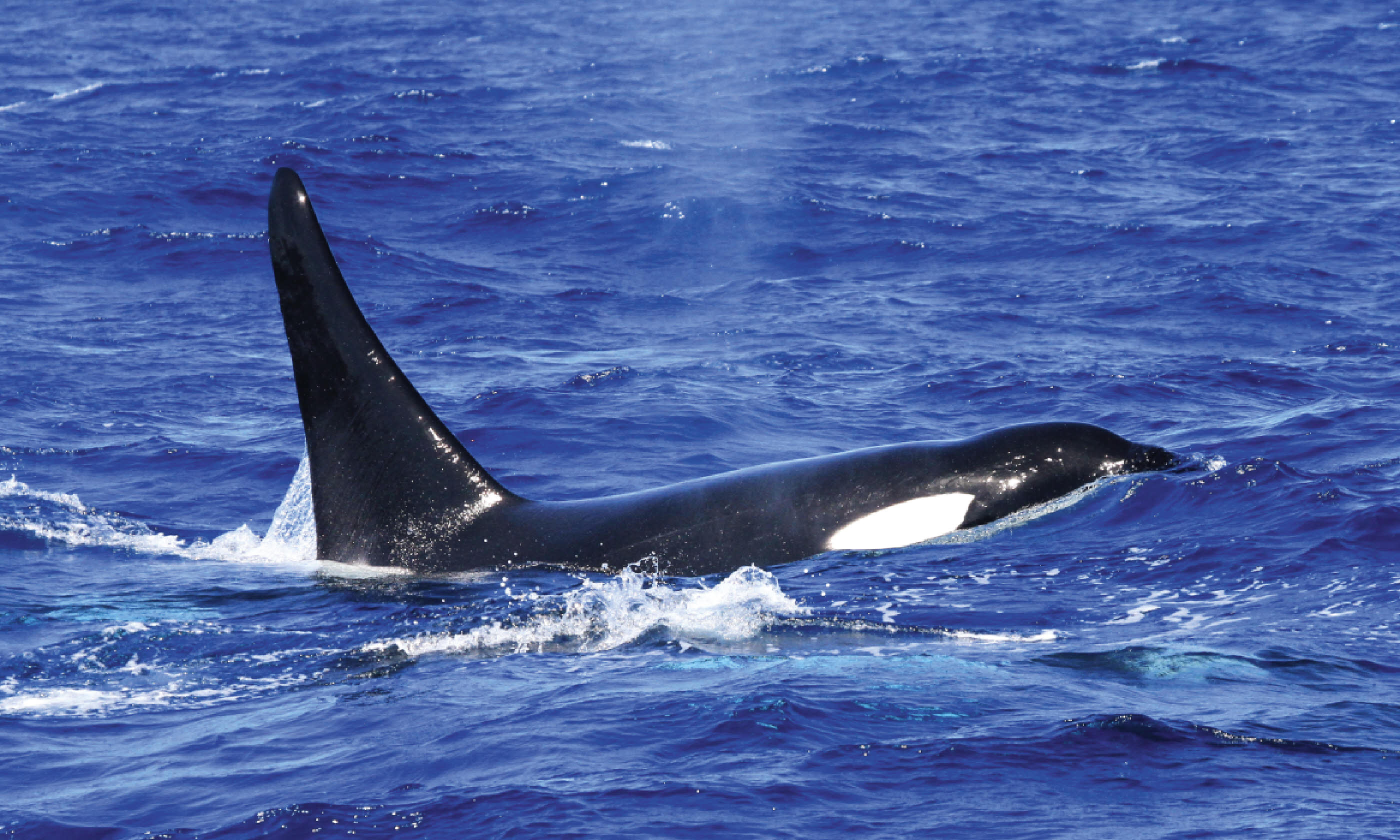
Whale watching in Western Australia
A marine marvel has been discovered in the waters off Western Australia – though things are pretty special on land, too...
Dave Riggs’ eyes blazed with uncontained joy: “This is the best drug I’ve ever come across.” He was telling me about the phenomena he’d discovered: that an array of marine life, including dozens of killer whales, congregate each February and March at a spot off Western Australia’s south coast.
However, the day had started with talk of less metaphorical drugs. As our group prepared to board for a 50km voyage to the submarine Bremer Canyon, we were all asked: “Have you taken your sea-sickness pills?” I had felt smug, confident that I wouldn’t succumb. But pride always comes before a fall and, sure enough, I was soon throwing my head over the side, narrowly missing a passing storm petrel.
All thoughts of nausea were forgotten when the cry of “Whales!” went up though. Hanging on to the rail, I lurched to the bow just in time to see the dorsal fin of an orca disappear below a wave.
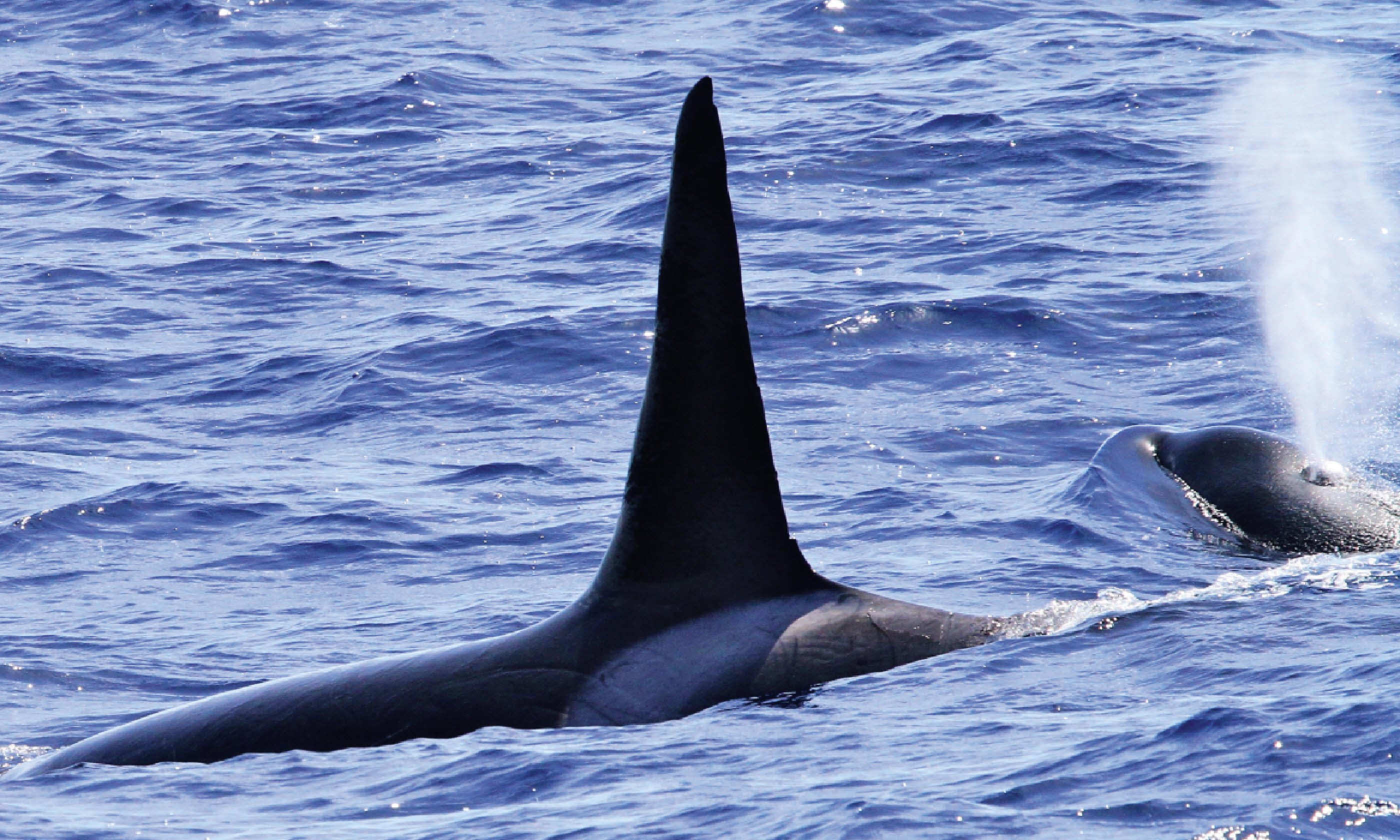 Orca gather at Bremer Canyon (Lyn Hughes)
Orca gather at Bremer Canyon (Lyn Hughes)
A small pod of orca were heading away from us. “For a social animal they are not being very social today,” a member of the crew said ruefully. We stayed in their vicinity for some time, willing them to come closer, but they remained aloof. “You should have been here last week,” said Leila, one of the two onboard researchers. “We have gotten to know Split Fin, a friendly female who will come over to the boat with her calf.”
Leila explained that they have seen orca every day in season, and have also regularly spotted sunfish, hammerhead sharks, great whites, dolphins and sperm whales. But the charismatic orca are the biggest draw, now it’s known that as many as a hundred gather here.
Filmmaker Dave Riggs had been paying annual visits to the Bremer Canyon area while working on a bluefin tuna survey and while making his acclaimed documentary about the mysterious fate of a great white shark, The Search for the Ocean’s Super Predator. It struck him that there were unusually large aggregations of apex marine species here, and in 2013 he mounted a dedicated research expedition. Now he works with whale-watching operator Naturaliste Charters to research the phenomena.
Not that it felt like the southern hemisphere’s largest congregation of orca on the day that I was aboard. We persevered, searching for the whales while listening to frustrating tales of days when dozens of them are seen. “I’m hoping we see a huge old bull who we call A380,” said skipper Mal. “But look out for other species too. We saw a great white shark yesterday.”
We eventually spotted another group of orca, and then realised there were actually three family pods within our field of vision. It was a fitting finale to our day, even if we hadn’t been blessed with one of the amazing encounters we had heard so much about.
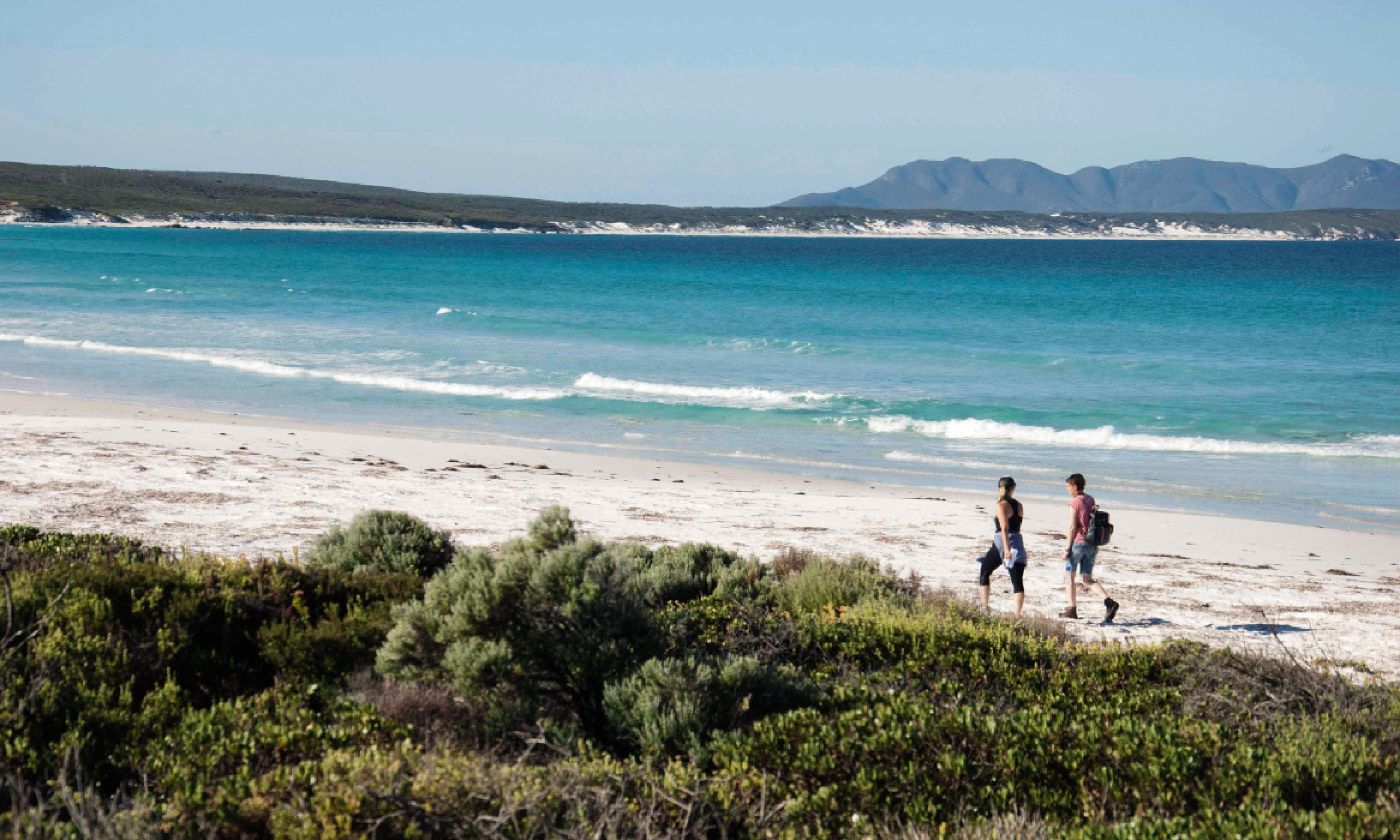 Deserted white sand beach in Western Australia (Lyn Hughes)
Deserted white sand beach in Western Australia (Lyn Hughes)
Mystery of the deep
“We’ll see you in the pub later,” the crew called as we disembarked. We were staying in Bremer Bay, a small town with a population of 240, but hadn’t appreciated that Bremer Bay’s only hotel was also the social hub for the district.
Sure enough, at dinner that night, the restaurant and bar were full of familiar faces. The boat’s owner, Paul Cross, joined us for a while; he explained that he had originally worked in oil and gas but had wanted a change. In 2009 he and his wife bought Naturaliste Charters (“I’d never even been on a whale-watching tour!”). Now Paul offers whale-watching from mid-May to mid-December, and from two different locations in Western Australia. “We see mostly humpbacks and southern rights,” he told us. “In November we see blues.”
However, it is now the mystery of Bremer Canyon that is fascinating him. “We don’t make a profit from the trips as we only take 25 passengers on the boat – just enough to cover the costs so that we can put scientists on the vessels. We have had two researchers every day this season, but we need a multi-disciplinary team.”
Then Dave Riggs himself turned up. He told us that he believes the canyon is a giant fuel deposit and is leaking hydrocarbon gas, which fertilises the ocean and leads to the abundance of marine life. But if that is right, why are the apex species only congregating in February and March? Dave hasn’t got the answers yet, but he is determined to find them, and to protect this unique spot.
He also feels that there must be a link between the biodiversity of the canyon and the terrestrial biodiversity of the coast here. “There are two remarkable hotspots here – Bremer Canyon and the Fitzgerald, which is ancient and a UNESCO Biosphere Reserve. There has to be a correlation. It’s not a coincidence that they are both so unique.”
Troubled Eden
If the orca had been magnificent, but hadn’t delivered quite the spectacle I had hoped for, Bremer Bay more than made up for it on the wildlife front. I took an evening walk and passed grazing kangaroos, which paused to stare at me briefly before continuing to chomp the lawns. At the Wellstead Estuary avocets and other waterbirds waded, while on the beach, a flock of pelicans gathered. An osprey quartered the waters, looking for fish, and rare rock parrots searched for food on a nearby sand dune.
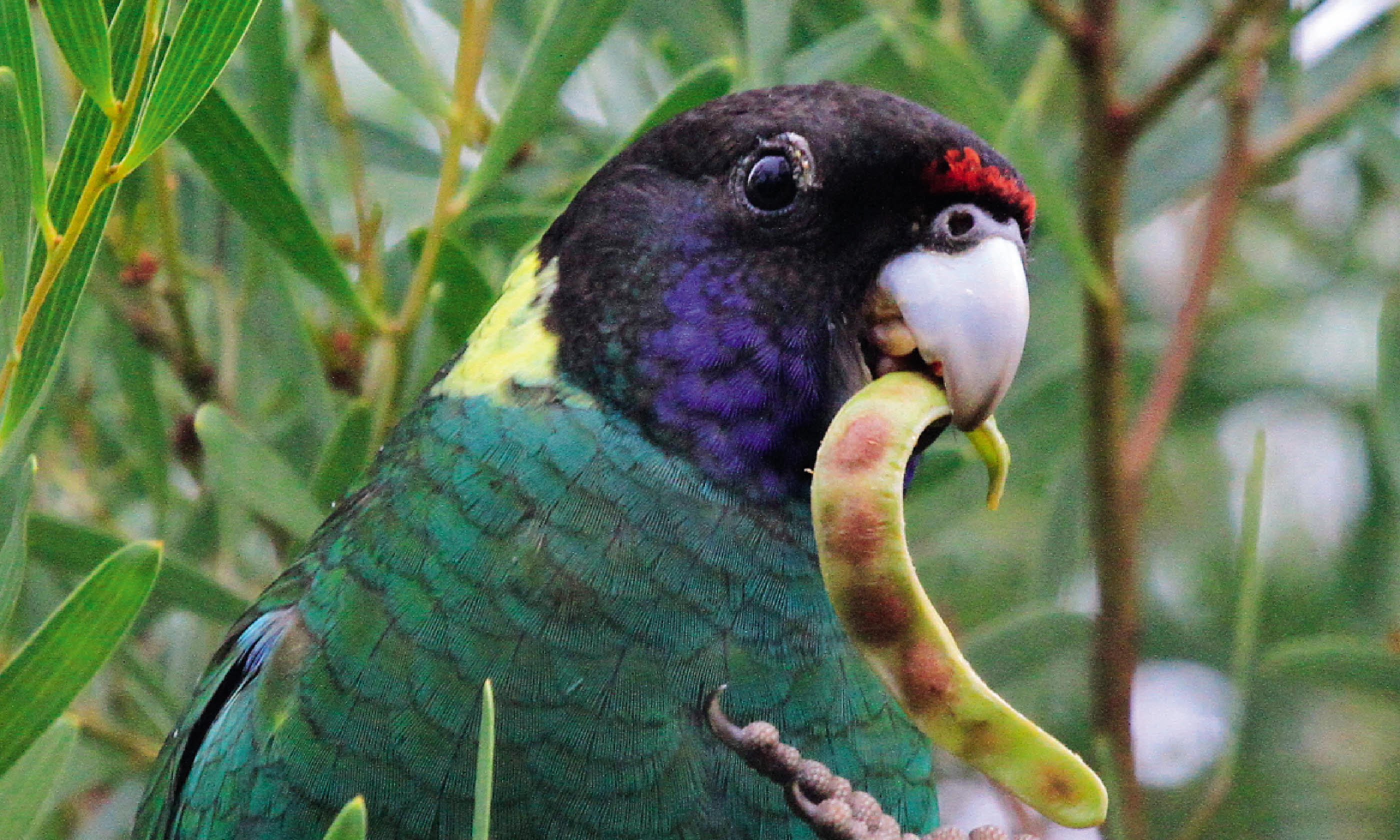 Australian ringneck parrot in Fitzgerald River National Park (Lyn Hughes)
Australian ringneck parrot in Fitzgerald River National Park (Lyn Hughes)
The estuary forms part of the Fitzgerald Biosphere, along with the nearby Fitzgerald River National Park. The 3,000 sq km of The Fitz contain nearly 20% of Western Australia’s plant species, 62 found nowhere else; everyone kept telling me that I should come back in August for the wildflowers. The park is also home to the critically endangered Western ground parrot, of which there are only around 140 left in the wild.
I was even more excited to hear that the park is one of the best spots to whale-watch from land. Southern rights migrate along this coast from May to October and, in season, whales with their babies can be seen in the limpid waters of the bay below Point Ann.
They weren’t there as we walked along this stretch of coastal heathland; however, a sea eagle did swoop by. We were making our way down to a gloriously empty beach, where the white sand squeaked underfoot. The only other sounds were the crashing of waves and the keening of gulls. “Leave me here,” I half-joked, completely beguiled.
Not that this Eden is without its troubles. We had to wash the tyres of our vehicle before entering the park, such is the concern over Phytophthora dieback, a fungus deadly to many plants and for which there is no known cure. Meanwhile poison pellets are put down in an attempt to eradicate foxes and feral cats, both of which are deadly to many of Australia’s native mammals as well as the ground parrots.
Brilliant birds
Walking a section of the Bibbulmun Track a couple of days later, the same two issues were very obvious as we kept passing signs warning of 1080, a poison made from native plants that is safe for native animals but not for foxes. We stopped several times to clean our boots at special stations.
The ‘Bib’ runs for 1,000km from Kalamunda, in the Perth Hills, to Albany. My guide, Simon Mendelawitz, was an ‘End to Ender’, having spent a couple of months walking the whole track with his wife in 2008, taking it at an easy pace. It was a life-changing journey as it inspired them to give up their day jobs and take over a walking company a few years later.
We followed the coast, our route taking us through woodland, sunlight dappling the path. Simon would stop every now and then to point out an interesting plant. Snottygobble, anyone? And I never thought I’d be captivated by the weevil pollination of Macrozamia cycad plants – but the theory that female plants have a pheromone identical to female weevils, which acts as a siren call to male weevils living on male plants, had me spellbound.
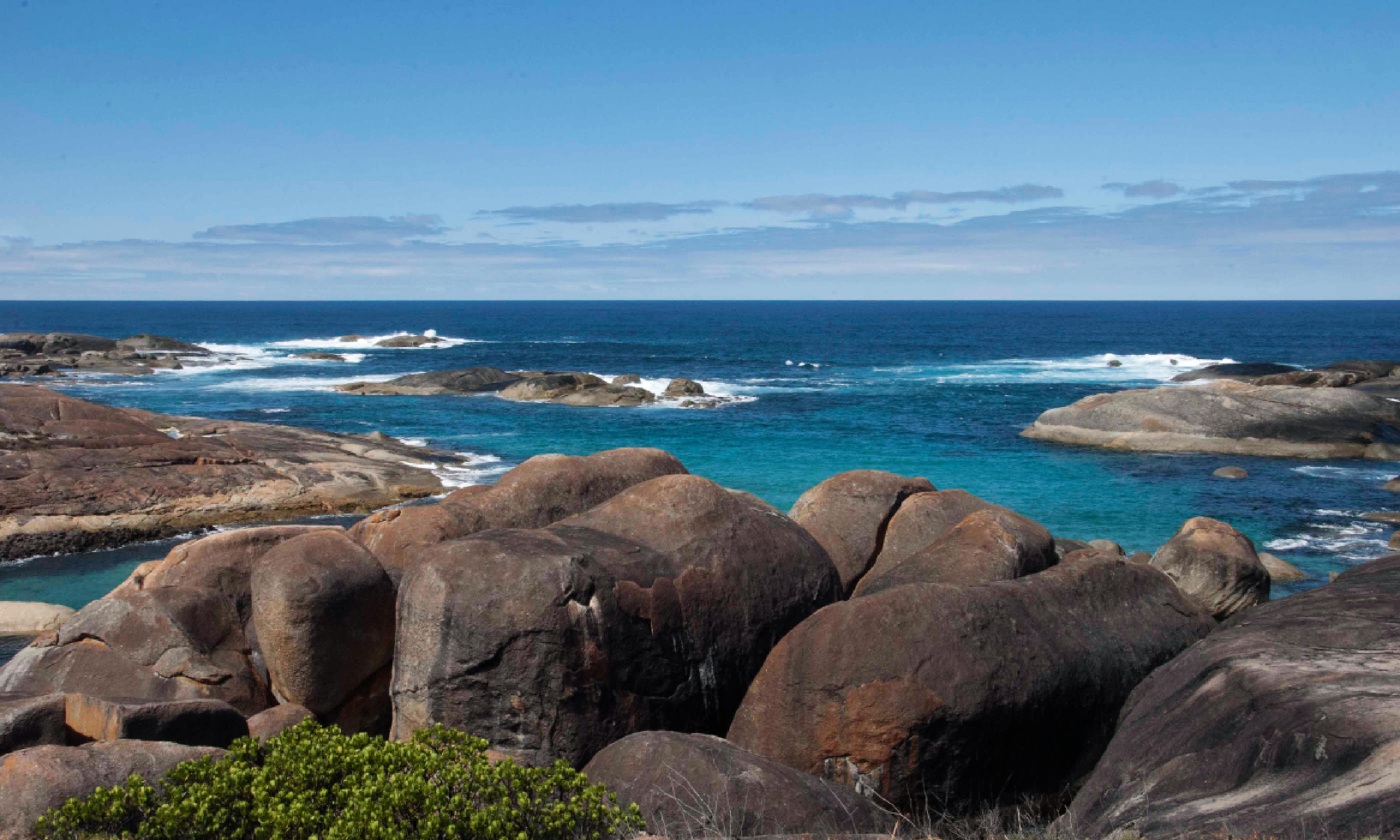 Elephant Rocks, William Bay National Park (Lyn Hughes)
Elephant Rocks, William Bay National Park (Lyn Hughes)
Feeling rather sorry for the deceived male weevils, I tried to divert my thoughts by searching the bush for birds. We saw around 80 species in just a few days of exploring the area; the highlight was the unexpected sight of a huge flock of endangered white-tailed black cockatoos at a vineyard in the Porongurup Ranges.
The other bird highlight was a splendid fairywren at the Valley of the Giants, aptly named after the giant tingle trees that are hundreds of years old. The bird was small in stature but mighty in attitude as it showed off its brilliant-blue breeding plumage, bouncing between branches and pedestrian hand-rails. We left it behind as we took a treetop walkway, and then descended to a ground-level boardwalk that wound around the ancient arboreal behemoths, some of which resembled something out of a Grimm’s fairytale.
Wine, whales & trails
Back on the Bibbulmun Track, we rested at a hut and filled in the register. A second logbook contained contributions and musings from walkers. One name cropped up again and again: Pack Animal. He is a legend on the trail, reputedly having walked End to End 18 times; in the book, hikers boasted of having met him, and thanked him for advice. Simon admitted he hadn’t bumped into him yet – “Well, I probably have, but not knowingly!”
The simple huts along the trail are free to use, providing camping space, a sleeping platform, picnic table and water. But Simon explained that on his guided walks he provides comfortable accommodation and quality food. “We’re for people who enjoy walking, but without having to carry everything with them. They get a shower and good food, and a chance to relax over a glass of wine.”
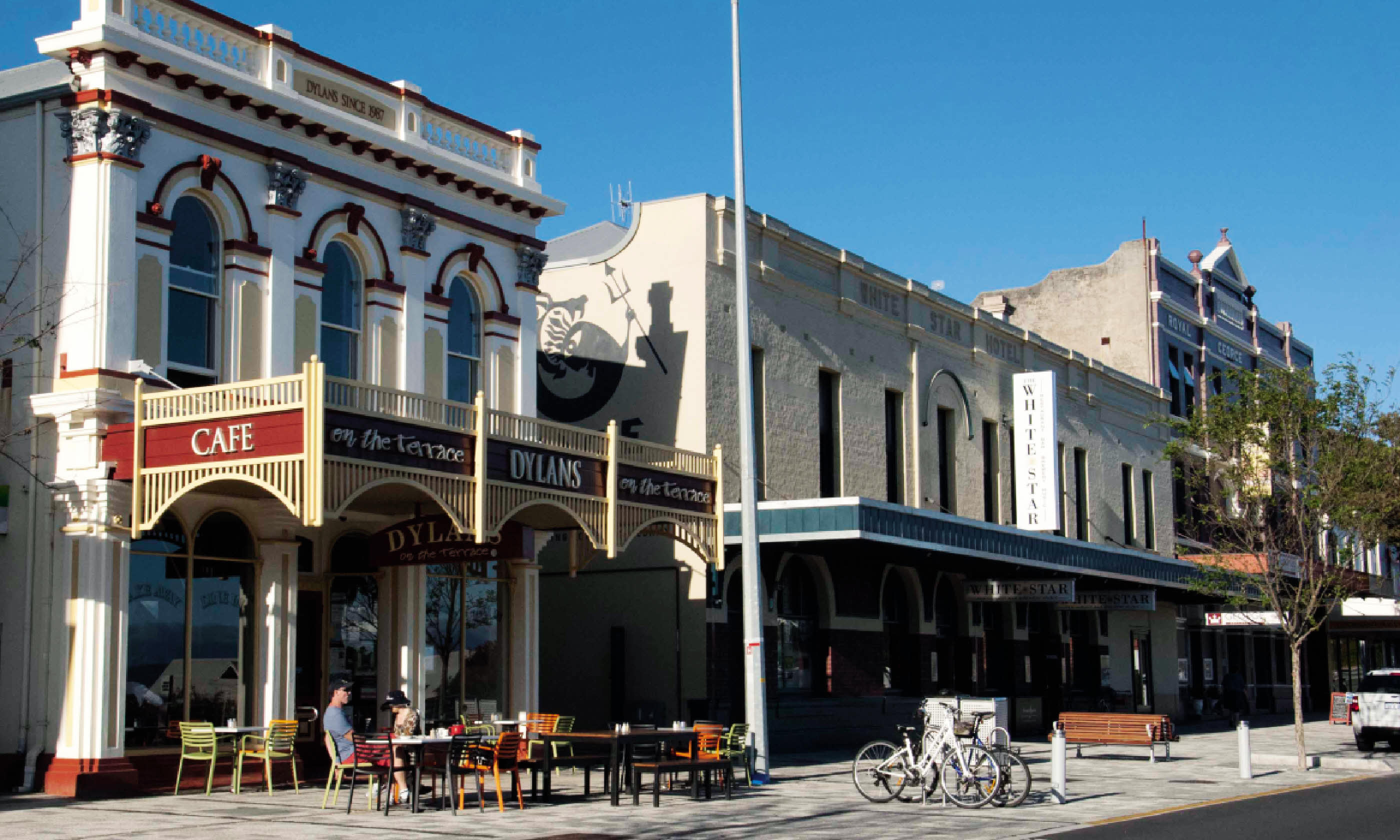 Dylan's On the Terrace restaurant, Albany (Lyn Hughes)
Dylan's On the Terrace restaurant, Albany (Lyn Hughes)
Oh yes, the wine. The wines here are often overshadowed by those from WA’s better-known Margaret River, but the relatively cool Mediterranean climate results in premium wines, with most of the classic varieties represented. I had tasted samples at several of the ‘cellar doors’ (as wineries open to the public are called) and had been impressed. The food, too, had been an unexpected highlight, with fresh seasonal produce featuring at the core of every meal.
We walked on, passing just one person in several hours of strolling. Every now and then a break in the trees revealed a tantalising coastal vista, before we left the forest behind and walked through clifftop heathland. A hang glider launch site looked enticingly over the perfect white-sand bay of Shelley Beach, the aquamarine sea so clear that we could see fish in the shallows.
The Bib finishes at Albany, Western Australia’s oldest town, known for having one of the most beautiful natural harbours in the world. It was from here that the first Anzac (Australia and New Zealand Army Corps) convoys gathered in November 1914. Over 41,000 men and thousands of horses left; many did not to return.
The new National Anzac Centre is spectacularly set over the harbour, and offers a fascinating but sobering insight into the First World War. More recent history is revealed at Discovery Bay, home to the town’s old whaling station, which operated from 1952 to 1978. The whale oil was used for lubricants and foodstuff, and the operation was only closed when it ceased to be economically viable.
In the 26 years the station was open, 14,000 whales were killed – first humpbacks, until the killing of them was banned in Australian waters in 1963, and then sperm whales. The whales would be towed into the bay, attracting huge numbers of sharks. “It was a whale buffet out there,” said a guide at the museum that now sits on the spot.
It’s a relief to know that those days are long gone, and that now this is one of the best places in the world to see whales. Wildflowers, walking, wine and whales… all compelling reasons to visit. And what about the giant trees, the granite ranges and those deserted white-sand beaches? All that is missing in this corner of Australia are the crowds. And what a blessing that is.
Make it happen...
Getting there
Etihad Airways flies daily from London Heathrow to Perth via Abu Dhabi. Returns cost from £644 (Economy) and £2,891 (Business); journey time is from around 21 hours. Etihad also flies to Perth from Manchester and Edinburgh (from 8 June, 2015).
Getting around
To get from Perth to Albany you can fly (45mins) or get a bus (5-6hrs). Alternatively, hire a car from Perth or Albany. Self-drive is easy: driving is on the left and roads are fairly empty. The main hazards are kangaroos and other wild animals – watch out for them bouncing across the road, particularly in the early morning and evening, and after dark.
Accommodation
Bremer Bay Resort is set amid native bush and has views of the Bremer Estuary.
The quirky and friendly Quaalup Homestead Wilderness Retreat is within Fitzgerald National Park. Take your pick from rooms or camping. Cape Howe Cottages, between Albany and Denmark, offers self-catering accommodation.
Whales, walking and wine
Naturaliste Charters runs Bremer Canyon Killer Whale expeditions daily in February and March.
Inspiration Outdoors runs four-day treks along the Bibbulmun Track, including all meals, accommodation and a guide.
Wineries worth visiting include Singlefile Wines (relatively new but has won several awards), the small and friendly Ironwood Estate in the Porongurup Range, and the large but beautiful Lake House in Denmark.
Food & drink
Expect fresh, seasonal produce including local seafood and beef. Marron, a type of crayfish, is a rare delicacy. Good vegetarian dishes are widely available while the local wines are fabulous.
Seek out Pepper & Salt, set within Denmark’s Forest Hill Vineyard; here, chef-patron Silas Masih creates his own brand of gourmet fusion cuisine most lunchtimes (but just one evening a week). At Albany’s National Anzac Centre, Garrison takes food seriously, offering everything from Sunday roast with Yorkshire pudding to modern dishes using local produce. The Lake House in Denmark offers imaginative lunch platters in a lovely vineyard setting overlooking a private lake.
For more information, see
westernaustralia.com

 Orca gather at Bremer Canyon (Lyn Hughes)
Orca gather at Bremer Canyon (Lyn Hughes)


